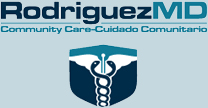A Healthy Diet Is a Key Factor in Health and Wellness

The Academy of Nutrition and Dietetics has designated March as National Nutrition Month, an opportunity to highlight the importance of nutrition in our health and wellness. It’s a time to focus on making healthy food choices and creating better eating habits. Maintaining a healthy diet is essential as it protects against many chronic illnesses such as heart disease, type 2 diabetes, and some types of cancers. Healthy eating boosts the immune system, supports healthy pregnancies, and may help us live longer.
Different foods provide the body with key nutrients, so it’s important to select a variety of foods within each food group. These groups have changed somewhat over the years. The old food pyramid many people may remember from childhood was replaced over a decade ago with a chart called MyPlate, which shows five food groups and better illustrates the proportion of each group that should be eaten daily. The five food groups in MyPlate are fruits, vegetables, grains, protein foods, and dairy. Each group plays a role in a healthy diet. Based on a recommendation of 2,000 calories per day for women and 2,500 calories per day for men, the following are recommended servings from each group.
Fruits
Two cups per day is recommended and includes fruits and 100% fruit juices. Fruits may be fresh, frozen, canned, or dried. Most fruits are low in fat, sodium, and cholesterol. Adding fruit to the diet may increase the amount of fiber we eat, which aids in the digestion of food.
Vegetables
Adults should eat 2 ½ cups of vegetables each day. Vegetable choices should be varied and include some from the following subgroups: dark greens; red and orange; beans, peas, and lentils; and starchy vegetables. Each subgroup provides different nutrients that are vital for good health. Most vegetables are naturally low in fat and calories.
Grains
Adults should eat 6 ounces of grains each day, with half the grains being whole grains. These whole grains contain the bran, germ, and endosperm while refined grains have undergone a process that removes the bran and germ. Foods in the grain group include breads, pasta, oatmeal, grits, tortillas, and breakfast cereals.
Protein Foods
This group contains seafood, meat, poultry, eggs, soy products, nuts, and seeds. Beans, peas, and lentils also contain protein, although they are considered part of the vegetable group. Meat products should be lean or low fat. Seafood options such as salmon are also rich in omega-3 fatty acids, which have been linked to many health benefits. The recommended protein serving per day is 5 ½ ounces.
Dairy
Most Americans don’t get enough dairy. Three cups of low fat or fat-free dairy is recommended. Milk, yogurt, cheese, and fortified soy milk are good choices. Avoid high fat dairy such as cream and butter.
RMD Primary Care
If you have questions about how food choices impact your health, contact the providers at RMD Primary Care.




